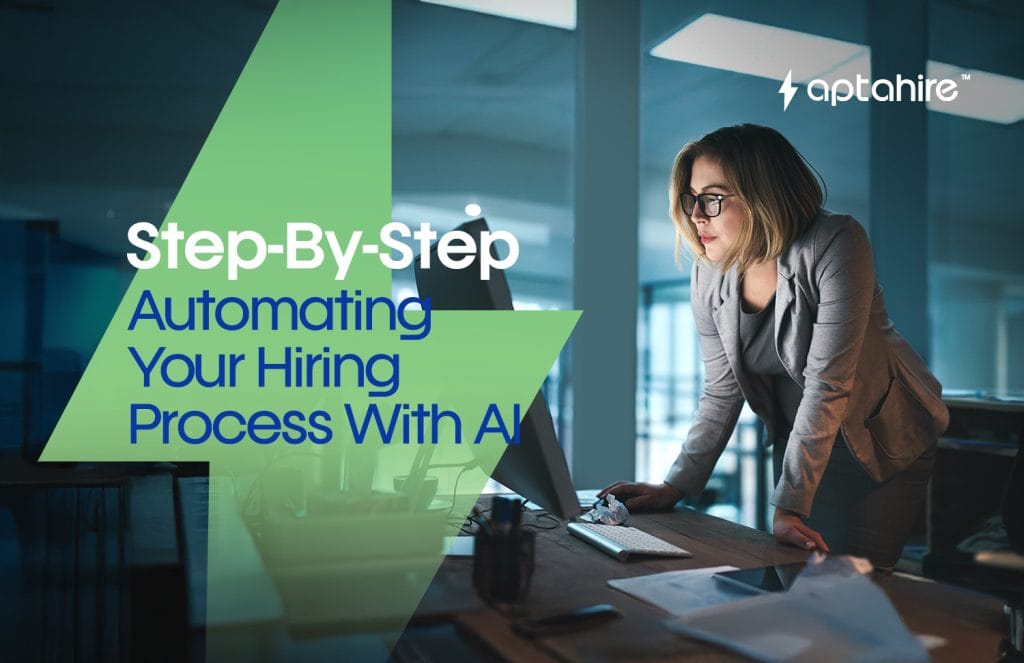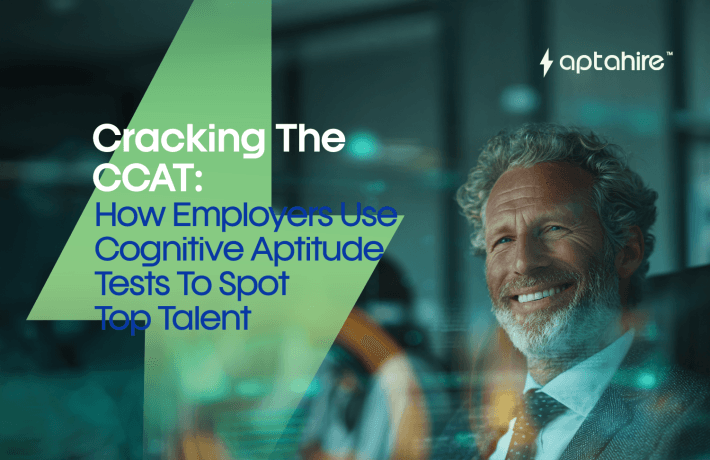Step-by-Step: Automating Your Hiring Process with AI

Let’s be honest, hiring can be overwhelming. Between juggling multiple roles, reviewing piles of resumes, and chasing down interview feedback, it’s easy to feel like recruitment is a full-time job in itself (especially if you already have a full-time job).
But what if we told you there’s a smarter way to do it?
Yep, we’re talking about automating your hiring process with AI. Sounds fancy, right? But don’t worry, this isn’t some mysterious robot magic only tech giants can use. With the right tools and mindset, any business, yes, even yours, can automate hiring and make it smoother, faster, and less painful.
In this guide, we’ll walk you through exactly how to do it, step by step.
First Things First: Why Automate Hiring?
Here’s the deal: traditional hiring is slow, messy, and full of human bias. You’re reading resumes for hours, second-guessing every decision, and still ending up with the wrong candidate sometimes.
On the flip side, AI-powered hiring can help you:
- Save hours (and your sanity)
- Get better-quality candidates
- Create a consistent, fair process
- Offer a smoother candidate experience
And the best part? You still stay in control. AI just handles the boring stuff so you can focus on the meaningful parts, like actually getting to know the person behind the resume.
Step 1: Figure Out What You Can Automate
Not everything in hiring should be automated. But a lot of it can be, and that’s where the magic starts.
Tasks You Can Totally Automate:
- Writing job descriptions
- Screening resumes
- Shortlisting candidates
- Interview scheduling
- Skills testing
- Sending emails and updates
- Tracking applicant status
- Onboarding checklists
But Leave These to the Humans:
- Final interviews
- Culture fit conversations
- Salary talks
- Personal feedback
- Welcome calls and introductions
Automation is here to enhance, not replace, the human touch.
Step 2: Pick the Right AI Hiring Tools
Now, don’t go overboard and subscribe to five fancy platforms all at once. You want something that’s easy to use, budget-friendly, and built for small businesses, not massive HR teams.
A few great tools worth exploring:
- AptaHire – A full-stack hiring assistant designed for SMBs. Think resume screening, behavior analysis, and onboarding tools, all rolled into one.
- Manatal – A smart ATS with built-in candidate scoring.
- Vervoe – Great for skills assessments that actually tell you how someone works.
- HireVue – Helps with AI-powered video interviews.
- Zoho Recruit – Customizable, simple, and friendly on the pocket.
Start small. Test what works for you. The best tool is the one you’ll actually use.
Step 3: Write Better Job Descriptions with AI
Let’s be honest! Most job descriptions out there are yawn-inducing. And a boring JD won’t attract great people.
Luckily, AI writing tools like ChatGPT, Jasper, or Textio can help you:
- Use inclusive, exciting language
- Add keywords that show up in searches
- Explain responsibilities clearly
- Highlight your culture and perks
Example:
“We’re a fun, fast-paced startup helping small businesses grow. Looking for a social media whiz who loves storytelling, memes, and can turn ‘likes’ into leads.”
That already sounds better, right?
Step 4: Let AI Handle Resume Screening
This is where AI really shines. No more manually scanning resumes for that one keyword or trying to remember who had the better profile.
AI tools can:
- Scan hundreds of resumes in seconds
- Highlight top matches
- Flag red flags
- Rank candidates by fit
You get a neat shortlist of the most relevant applicants, ready to move to the next step.
Bonus: It eliminates biases based on name, photo, or resume design.
Step 5: Use Smart Assessments Instead of Guesswork
Resumes only tell you what someone says they can do. But skill assessments show you what they can actually deliver.
Use AI tools to:
- Send tailored skills tests
- Grade them automatically
- Analyze behavior, logic, and communication
- Even run roleplay scenarios for sales, support, or coding roles
Tools like Vervoe, Codility, or AptaHire make this super simple. And it’s fairer too, everyone gets judged on actual skill, not pedigree.
Step 6: Make Interviews Smarter with AI
If you’re doing video interviews (and you should be), AI can take it up a notch.
- Let candidates record one-way videos on their time
- Use AI to assess tone, clarity, and confidence
- Automatically flag top candidates
- Reduce your time spent watching every single video
Just remember, don’t leave the decision to AI alone. Use it as a guide, not a verdict. People are more than algorithms.
Step 7: Automate Scheduling and Communication
This one’s a lifesaver.
Use tools like Calendly to let candidates pick their interview slots. Combine that with automated reminders, status update emails, and offer letter templates.
No more chasing people down or ghosting (on either side!).
Candidates will appreciate the smooth, respectful experience, and you’ll save tons of time.
Step 8: Track What’s Working and Improve
Most AI tools come with built-in analytics. Use them!
Check things like:
- How many people applied?
- Where are they dropping off?
- Which channels brought the best candidates?
- How long does it take to make a hire?
- What are your diversity stats?
Use this data to tweak your process and make smarter hiring decisions every time.
Don’t Forget the Human Touch
AI can do a lot, but the magic of hiring still lies in human connection.
Make time to:
- Personalize communication
- Be kind and transparent in interviews
- Share your company story
- Celebrate new hires
- Check in post-joining
You’re not just filling a role, you’re bringing someone into your mission.
Real-Life Example: Startup Hiring in 10 Days
A 12-person SaaS startup needed 3 hires urgently: a designer, a marketer, and a customer support rep.
Here’s what they did:
- Used ChatGPT to write fun, specific job descriptions
- Shared jobs on WhatsApp, LinkedIn, and Discord
- Used AptaHire for resume screening + behavior analysis
- Scheduled interviews with Calendly
- Gave mini test assignments
- Sent offers and onboarding kits within 10 days
They saved nearly 40 hours of manual work. The candidates loved the experience. Win-win.
Final Thoughts: Start Small, Grow Smart
AI hiring might sound complex, but it really isn’t. Start with one step. Maybe automating resume screening. Or using an AI tool to write JDs. Once you see the time saved, you’ll never look back.
The future of hiring isn’t about robots replacing humans. It’s about humans hiring better, with a little help from robots.
So go ahead, reclaim your time, reduce burnout, and build a smarter hiring system, without needing a 10-person HR team.
And if you’d like help setting up your first AI hiring workflow, I’ve got you. Just ask.
FAQs
1. How to use AI in the hiring process?
AI can help screen resumes, rank candidates, schedule interviews, analyze video responses, and even assess skills. Tools like AptaHire, Vervoe, or HireVue make the process faster, fairer, and more efficient by handling repetitive tasks and offering data-driven insights.
2. How to automate the hiring process?
Start by identifying repetitive tasks: like resume filtering, interview scheduling, and sending emails. Use tools like an ATS (Applicant Tracking System), AI-based video interview platforms, and smart assessments to automate these steps. Combine them into a smooth, end-to-end workflow.
3. What are the 7 steps of the recruitment process?
- Identify hiring needs
- Write job descriptions
- Post jobs and source candidates
- Screen applications
- Conduct interviews
- Make offers and negotiate
- Onboard the new hire
These steps can be optimized or partially automated with the right tech.
4. Which AI tool is best for recruitment?
It depends on your needs, but some popular options include:
- AptaHire (AI-powered end-to-end hiring)
- Manatal (smart ATS with scoring)
- Vervoe (skills testing)
- HireVue (AI video interviews)
- Zoho Recruit (customizable for SMBs)
Choose based on your budget, team size, and hiring volume.
5. How to apply AI in HR?
Beyond hiring, AI can be used in HR for:
- Employee engagement tracking
- Learning and development personalization
- Predictive retention analytics
- Performance reviews
- Chatbots for employee support
Basically, anywhere there’s data and repetition, AI can step in to help.
6. What is an ATS tracker?
An ATS (Applicant Tracking System) is software that helps you organize and manage job applicants. It tracks resumes, candidate stages, communication history, and hiring progress, all in one place. Think of it as your digital hiring assistant.
7. What software do recruiters use?
Recruiters commonly use:
- ATS platforms (e.g., Greenhouse, Lever, Zoho Recruit)
- Sourcing tools (e.g., LinkedIn Recruiter, AmazingHiring)
- Assessment tools (e.g., HackerRank, Vervoe)
- Scheduling tools (e.g., Calendly)
- CRM systems for candidate nurturing
- AI tools like AptaHire for full-cycle automation
These tools help streamline hiring and improve quality-of-hire.



